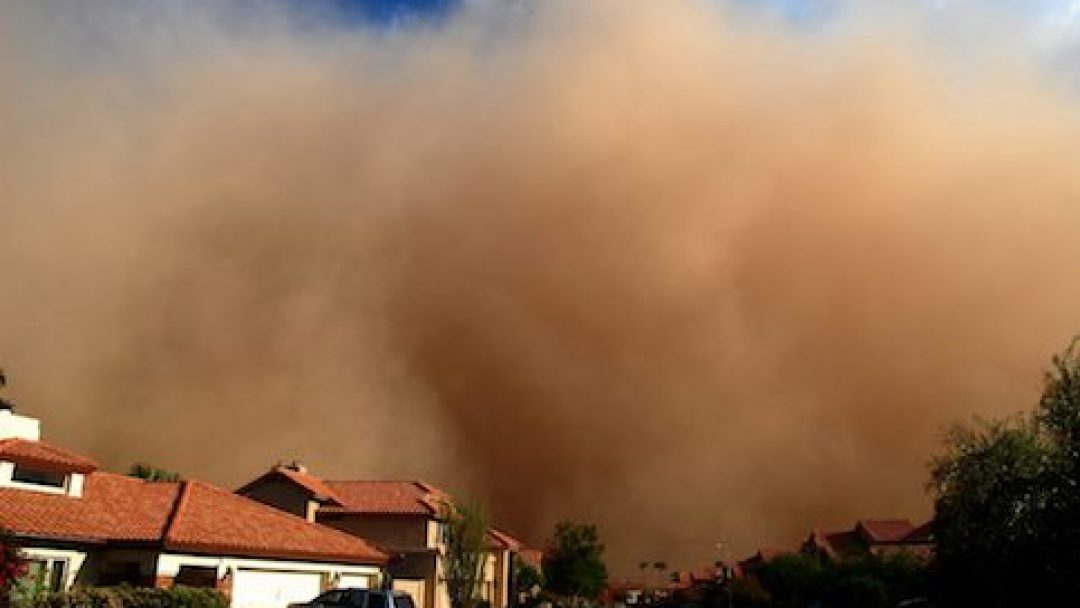With all the recent rain hitting the state, along with it has brought an increase in Valley Fever symptoms.
While the disease symptoms includes coughing, sneezing, fever and weight loss as a result of the seasonal weather, the disease can actually be contracted any time of the year.
Recent evidence has led researchers to kicks start a study that aims at learning more about the disease, as the disease has become more prevalent in Arizona.
Tucson’s Veterinary Specialty Center Dr. Lisa Shubitz sees the disease first hand while treating dogs just like Daisy.
“Daisy was very sick when she came in,” said Dr. Shubitz. “She had lots of weight loss and had a lot of coughing. She wasn’t eating anything. Those are typical signs of a lung form of Valley Fever.”
The disease also strikes fear in the heart of all dog owners. “I thought she was going to die,” said Jen Jewell, Daisy’s owner. “She was that sick, and she would just curl up underneath the covers and not want to play. She wouldn’t eat her food.”
A Hungarian Vizsla and not even a year old, Daisy’s life was in serious jeopardy. While the current solution was the prescription of a stronger medication, the future goal is for an antibody that helps treat Valley Fever. In an effort to discover that treatment, Dr. Shubitz spends any time away from the clinic at the University of Arizona in Tucson supervising lab work.
Thousands of dollars have been donated by dog owners in the primary research stages, which have led to them playing an integral role in making the grant possible.
Daisy showed positive results four weeks after being treated by Dr. Shubitz, as she showed signs of being stronger on the way to a complete recovery. Through proper medical treatment from invested doctors, Valley Fever very well could be cured for all dogs.
“We stand on the shoulders of giants before us, from a vaccine perspective, because doctors and other scientists have been working on a vaccine to prevent Valley Fever for more than 50 years,” said Dr. Shubitz.
Dr. Shubitz is currently part of a group that is working on a Valley Fever study. In year two of a four-year grant, the group has recently reinvigorated a 14-year-old vaccine from a colleague at University of Arizona that initially removed an entire gene from the Valley Fever fungus.
While the recent progress is a great sign, an impact is still a few years away. The vaccine must first be approved by the USDA, before safety studies can be conducted within community dogs. A successful vaccine could reach much further as it could also be used to treat people if it is found to be effective.
“We might alter it, but the basic quality of this vaccine, with this gene deletion, will probably be the core of whatever the formulation is,” said Dr. John Galgiani, Dr. Shubitz’s counterpart. “Some people may never get diagnosed, even though they are sick for a long period of time. For others, there’s a long period of time. A month or more.
Dr. Galgiani is focused on why people contract Valley Fever, who is more prone and how people can be diagnosed as early as possible. His dedication to the cause is evident as he also spends time with patients in search of treatment from specialists at the Banner University Medicine Valley Fever program.
“Valley Fever is a fungal infection,” said Dr. Galgiani. “We call it an endemic fungal infection, because it only occurs in certain endemic places, and we live in one of those places here.”
Research has shown that two out of every three Valley Fever infections within the United States, come out of Arizona. On an annual basis, approximately 100,000 within the state contract the disease. On top of that, two out of three subjects are unaware they are infected, while one out of three end up developing a severe illness from the disease.
The cause of Valley Fever comes in the form of a fungus located in spores that can be inhaled whenever dirt is kicked up.
“The fungus is only in these certain areas which were pretty rural,” said Dr. Galgiani. “Up until recently, if you think in the 1950’s, there were very few people living in Phoenix. Even less in Tucson. Fast forward three or four decades, you now have 4.5 million people in Metropolitan Phoenix, as opposed to 50,000, and 1 million people in Tucson.”
The growth of the Valley leads to a growth of the disease, and that has been seen as an epidemic has formed with people and dogs being diagnosed at a staggering rate.








